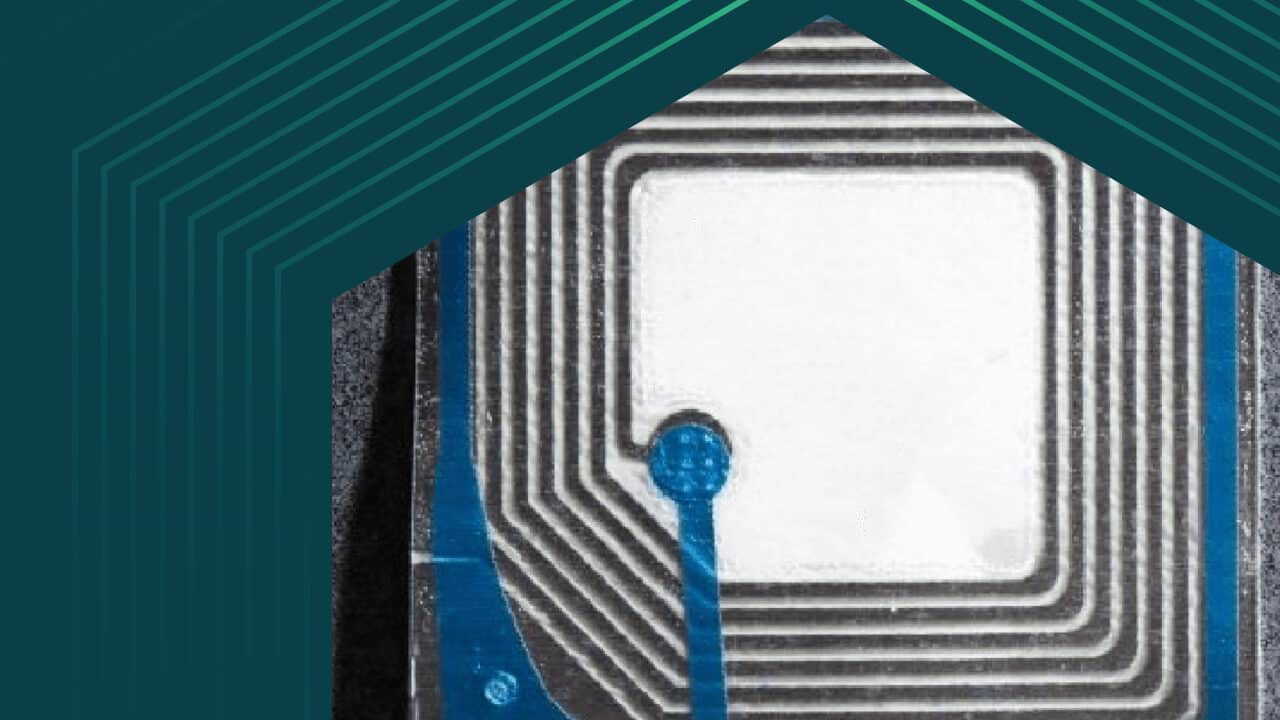
Once you learn the basics of this technology, it won’t seem so overwhelming and you’ll be ready to reap the benefits in supply chain, IT asset management, and other functional areas
RFID stands for Radio Frequency Identification. That sure sounds scary when you first hear it. But it turns out this technology is really quite simple, and you use it all the time in your everyday life without even knowing it.
Do you use a device in your car to pay tolls automatically? That’s an E-Z application of RFID. Did you adopt a pet and “microchip” your new best friend? That’s just a fancy way to say RFID. Did you train vigorously for a marathon and now have your time memorized down to the second? You can thank the RFID tag tied to your shoe or embedded in your race bib. Have you recently visited a mouse-themed amusement park and wore a bracelet that served as your entrance ticket, method of payment, and hotel key? That’s the happiest RFID on Earth.
Like any ID you carry around in your wallet, RFID is just a way to uniquely identify something. That’s it. In a business context, they are basically driver’s licenses for your company’s assets. And just like your driver’s license, it gets checked and recorded at specific points of entry to keep track of what entered where.
Think of it this way: you and your friends go to a crowded nightclub and there’s a line outside. When it’s your turn to enter, the bouncer checks your ID, reads some information on it, and records your entrance with a handheld clicker so the nightclub can track the number of patrons inside. This is what RFID does, except electronically, automatically, and invisibly. An asset with an affixed RFID tag passes through some specific point(s) in its supply chain where a reader remotely interrogates and records the unique information associated with that asset (e.g., part number, serial number, manufacturer, quantity, etc). Put simply, it lets you know where everything is, in real time, all the time.
There are a few key things of importance to note in the nightclub analogy:
- RFID tags are physical things that must be associated and attached to a specific asset. Imagine if you and your friends switched driver’s licenses or you left your ID at home by mistake; you would likely not gain entry.
- You have to invest in infrastructure to read RFIDs, just like the nightclub owner hired a bouncer to check IDs. The RFID tag on its own tells you nothing.
- You need to configure other systems to record information relayed by the RFID tag to benefit. Similar to how the bouncer records the count of patrons on a handheld clicker, the RFID tag does not store or encode additional information as it moves through your supply chain. Your ERP and/or other inventory management system(s) need to record and track what is where based on the unique identifier encoded onto the RFID tag.
Once you understand the basics of RFID and what it does, you may be wondering why you should consider implementing an RFID-enabled asset management system. Well the answer is as simple as learning your ABCs:
A is for Affordable
While the business world is only just starting to scratch the surface of potential RFID benefits, this technology emerged in the 1940s. As a result, we now enjoy the luxury of standing much closer to the bottom of the technology’s cost curve. Over the years, the upfront investment cost for RFID-reading infrastructure has plummeted. Additionally, the per unit cost of the RFID tag adhered to each asset is now as low as a few pennies. It used to be difficult to determine how expensive an asset needed to be to justify the increased per unit cost incurred by the RFID tag. Class leading organizations operating with RFID now realize they can’t afford not to tag almost everything.
B is for Business Planning
Ascertaining the location and quantity of all your organization’s assets in real time with a relatively high level of certainty used to require either an enormous amount of manpower or world class internal controls and business processes. RFID can provide these key pieces of information automatically and severely limit opportunities for errors to occur. The speed and ease with which business planning can be executed in this RFID-enabled environment is game changing. It allows organizations to leave labor intensive and manual data calls in the dustbin of history alongside paper accounting ledgers and floppy disks.
C is for Cost Reduction
The opportunities for cost reduction following RFID implementation are vast and in many cases still untapped. Some of them are obvious, such as lowering headcount required to conduct manual wall-to-wall inventory counts. This task enhanced by RFID is less time-consuming and required less frequently. There is also the clear benefit of improved loss prevention and/or decreased shrinkage rates by being able to isolate the vulnerabilities across your distribution channels. Many of the more significant benefits may not be immediately obvious. The visibility gained by RFID enabled operations allow organizations to decrease inventory levels across the end-to-end supply chain, freeing up enormous sums of net working capital and reducing opportunities for excess and obsolete inventory write-off expenses.
There are obviously dozens of other factors and benefits to consider before launching into an implementation, but what your organization does today to track and manage inventory is probably much harder and less effective than the equivalent RFID-enabled business processes. People often say effective communication is critical to success in business. Isn’t it about time your assets joined the conversation?
To learn more about the benefits of leveraging innovative technologies like RFID for your supply chain operations, click here or below to schedule a call with me today.
 Gaetano Gerace
Gaetano Gerace